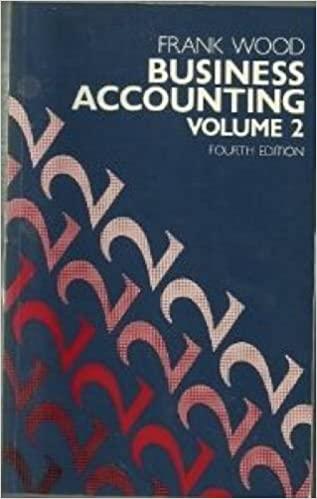Question
Answer TRUE or FALSE for the below: a) Changing an estimated useful life for an item of depreciable property will likely entail restating financial statements
Answer TRUE or FALSE for the below:
a) Changing an estimated useful life for an item of depreciable property will likely entail restating financial statements of prior years.
b) Warranty expense is not recorded until the actual warranty work is performed.
c) Preferred stock has a "preference" ahead of common stock for both dividends and liquidation proceeds.
d) Salvage value is ignored during the early years of life for an asset that is to be depreciated under the straight-line method.
e) A manufacturer would include only raw materials and work in process in its balance sheet; finished goods would be transferred to the buyer.
f) Current liabilities are debts and obligations that will be paid within one year or the operating cycle, whichever is longer.
g) Treasury stock transactions typical produce losses in the income statement, but not gains.
h) Contingent liabilities should be recorded in the accounts when it is possible the future event will occur and the amount of the liability can be reasonably estimated.
i) A corporation is created by obtaining a charter from the federal government.
j) Payroll withholdings are current liabilities to an employer.
Step by Step Solution
There are 3 Steps involved in it
Step: 1

Get Instant Access to Expert-Tailored Solutions
See step-by-step solutions with expert insights and AI powered tools for academic success
Step: 2

Step: 3

Ace Your Homework with AI
Get the answers you need in no time with our AI-driven, step-by-step assistance
Get Started


